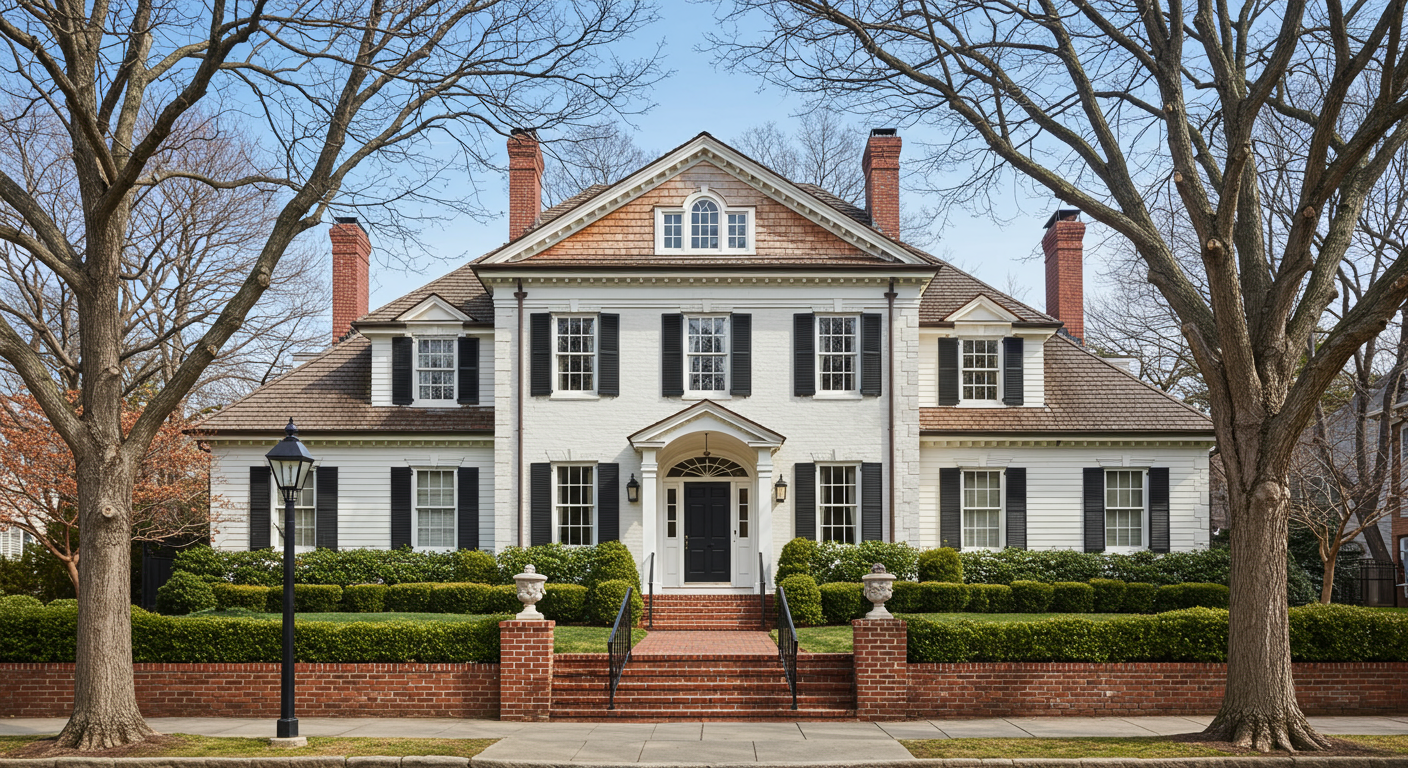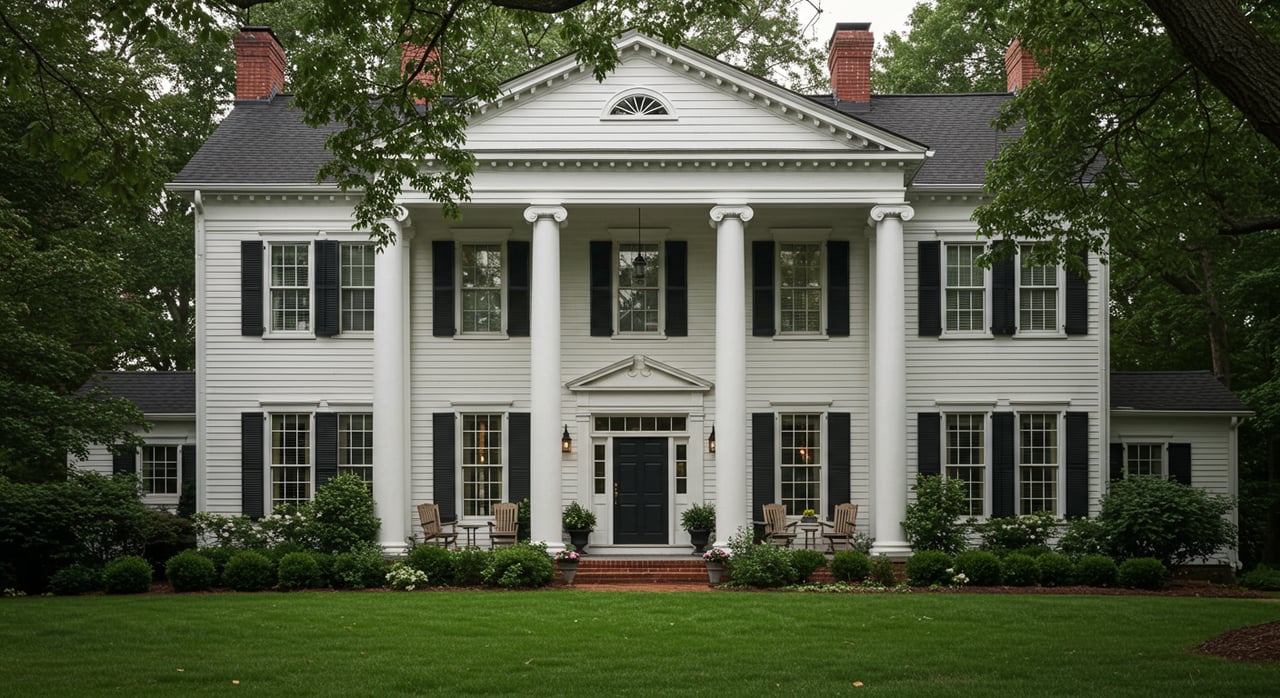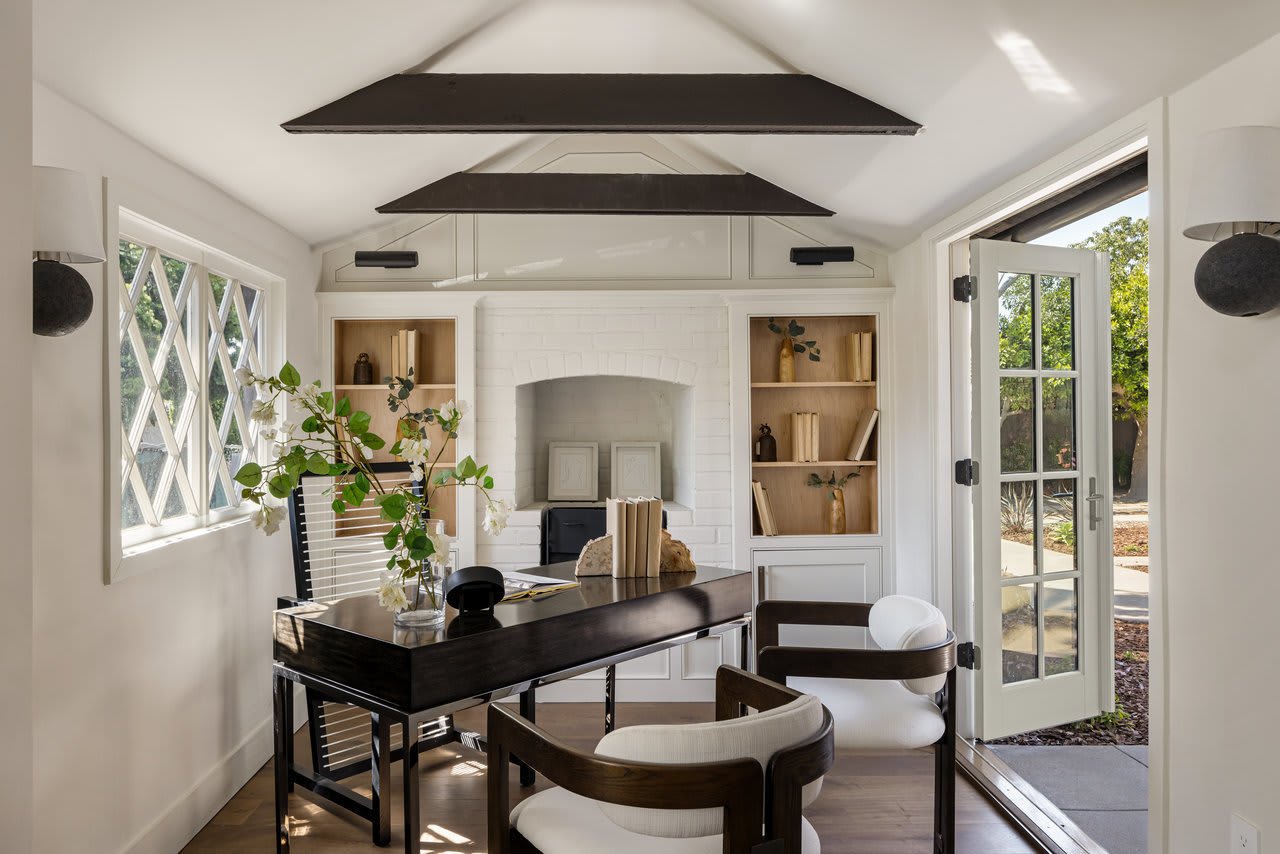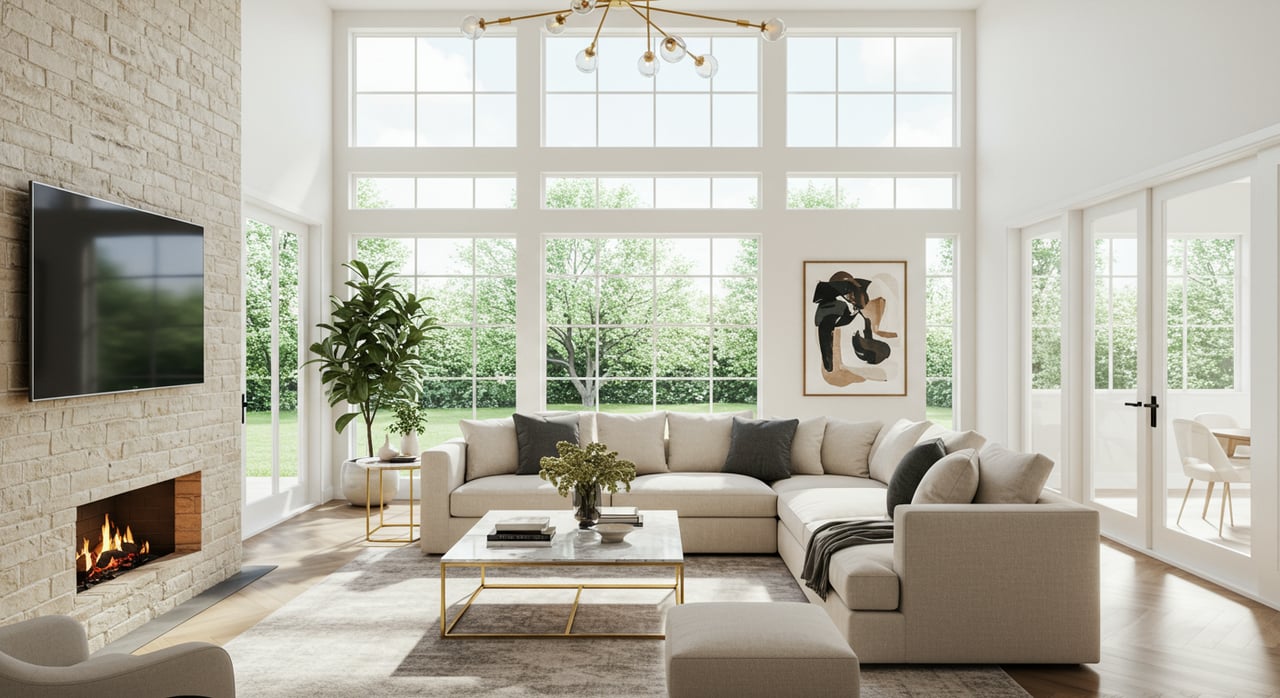A ll Colonial or Georgian style houses are based on the domestic architecture of the 18th Century. The widespread revival of these homes happened in the 1930s. During the 1920s, Mediterranean, English, and French derived styles dominated. The world of the 1920s came to an abrupt end in 1929, and with the onset of the Great Depression. Soon Europe was in turmoil with the rise of Fascism and threats of another great global war. At the same time, John D. Rockefeller, Jr. was rebuilding colonial Williamsburg. All these factors led to a “craze” for anything more authentically American. On the West Coast, there was a shift away from the European influences that dominated architecture up to that point.

The dominant characteristic of the Colonial house is its formal symmetry. They are typically two stories with the roof ridge (whether A-frame or Hip) running parallel to the street. They have elaborate front doors, often with crown pediments, fanlights, sidelights, and symmetrical windows flanking the front entrance.
The two principal subgroups one sees in Los Angeles are the New England (bottom photo) and Southern Colonial (top photo). Either style may be clad in clapboards, shakes, or brick. The Southern differs in that it typically has a columned front portico, either running the full length of the building (like George Washington’s Mount Vernon), or with a front facing pediment (like the White House).
Read more about the architecture in Los Angeles during these time periods:




